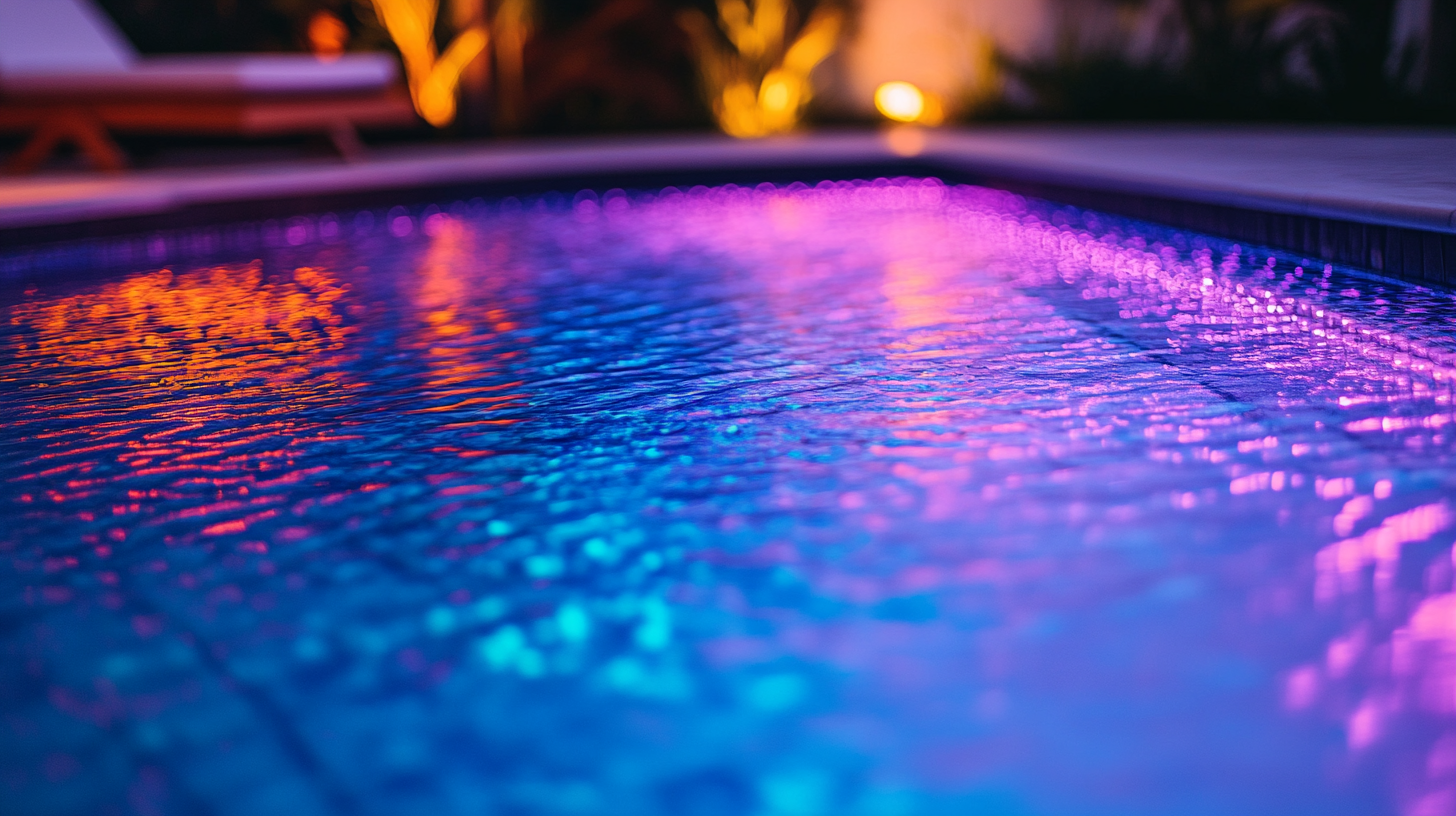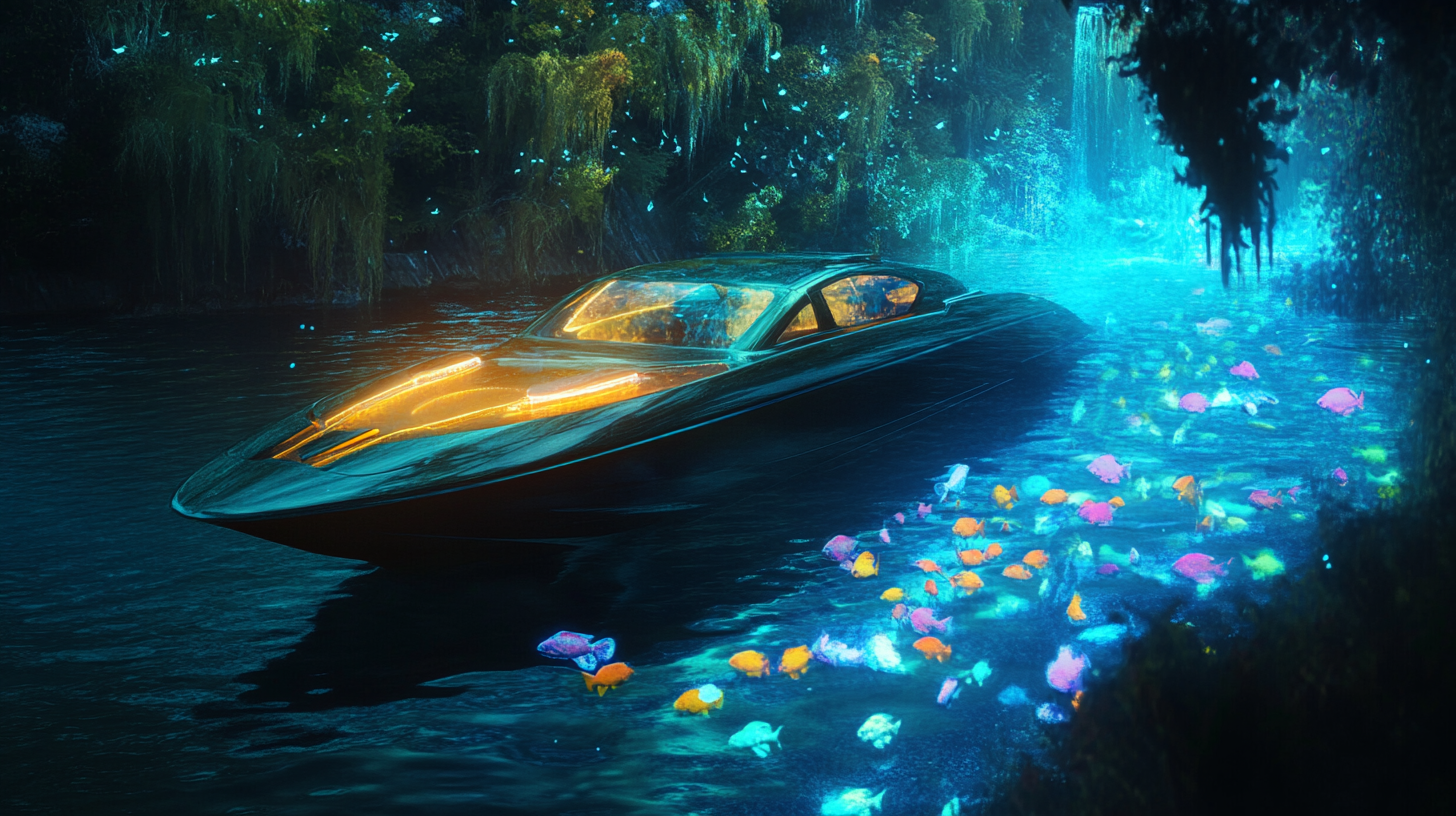Underwater pool lights for above-ground pools
When it comes to enhancing the ambiance and safety of your above-ground pool, choosing the right underwater pool lights is crucial. There are several types of lights available, each offering unique features tailored to different needs and preferences.
LED lights are quite popular due to their energy efficiency and longevity. These lights come in a variety of colors and can often be controlled via remote to create a vibrant light show or serene evening glow. They’re also known for their robust durability, making them a reliable choice for any pool owner.
If you’re looking for a more traditional option, you might consider halogen lights. Though they consume more energy compared to LEDs, they produce a warm, bright light that effectively illuminates the entire pool area. Halogen lights are easy to install and replace, making them a favored option for many.
Another trendy option is fiber optic lighting. These lights are distinct because their light source is housed outside of the pool, with the light being transmitted through fiber optic cables. This type of lighting is incredibly safe for underwater use because it eliminates the risk of electrical hazards within the water.
Magnetic pool lights provide a hassle-free installation experience. These lights use powerful magnets to attach to your pool walls, making them a convenient choice for above-ground pools. They can be easily moved or adjusted without the need for complex tools, offering flexibility if you like to frequently change your pool’s aesthetic.
Lastly, solar-powered pool lights present an environmentally friendly option. These lights harness the power of the sun to operate, reducing your energy costs and carbon footprint. Positioned around the pool or floating on the water surface, they automatically turn on as the sun sets, delivering a seamless and sustainable lighting solution.
Understanding the various types of underwater pool lights helps ensure you select the ideal lighting to not only brighten up your swimming experience but also accentuate the beauty of your above-ground pool.
Installation process
Installing underwater pool lights in above-ground pools can transform your swimming area into a magical nighttime oasis. Knowing how to properly install these lights is essential for both aesthetic and functional purposes. Luckily, the process is straightforward and can often be completed without the need for professional assistance.
First, you’ll want to determine the optimal placement for your pool lights. This often means selecting locations that will provide even illumination throughout the pool. Depending on the size and shape of your pool, you might need multiple lights to achieve this effect. Once you’ve decided on the placement, mark those spots clearly.
If you’re installing LED or halogen lights, begin by ensuring your pool wall is clean and free from any debris or algae. This is vital because any imperfections can hinder the proper adhesion of the lighting fixtures. Many above-ground pool lights come with brackets or mounts that make attaching them to the pool wall relatively simple. Use the provided brackets to secure the lights firmly, following the manufacturer’s instructions for the best results.
For magnetic pool lights, the installation process is even simpler. Just position the magnets where you want the lights to go and let the powerful magnets do their job. Adjust the lights as necessary until you achieve the desired look. Since they can be easily moved or repositioned, magnetic lights offer a great deal of flexibility if you like to mix things up often.
When it comes to fiber optic lighting, installation can be a bit more complex but immensely rewarding. The light source is typically located outside the pool, connected to the internal lights via fiber optic cables. Carefully guide these cables through the designated conduit in your pool wall, ensuring they are securely in place. Connect the other end to the light source unit and test them to make sure they are working correctly before sealing everything up.
Solar-powered pool lights are perhaps the easiest to install. Simply position them at the edges of the pool or let them float on the water surface. Since they rely on solar energy, there’s no need for wiring or electrical connections. Just make sure they get enough sunlight during the day to shine brightly come nightfall.
In all cases, careful attention to the sealing of electrical components is crucial. Waterproof seals and tight connections are a must to prevent any electrical hazards. Always double-check that your lights are appropriately rated for underwater use and that all connections are secure before powering them on.
By following these steps, you can ensure that your underwater pool lights are not only installed properly but also enhance the beauty and functionality of your above-ground pool. With the right installation, you’ll be ready to enjoy night swimming in a beautifully lit environment.
Safety considerations
When it comes to underwater pool lights for above-ground pools, safety is paramount. The mesmerizing glow beneath the water should not come at the expense of your well-being. To ensure a safe and enjoyable swimming experience, there are several crucial safety considerations to keep in mind.
First and foremost, always check that the pool lights you choose are specifically designed for underwater use. Buying lights not rated for underwater installation can lead to electrical malfunctions and pose serious risks. Make sure the lights carry an IP68 rating, indicating they are dust-tight and water-resistant even when submerged for extended periods.
Proper installation is another key aspect of pool lighting safety. This is especially true for wiring and electrical connections. All electrical components must be installed in compliance with local building codes and regulations. If you’re not confident in your abilities, don’t hesitate to consult with a licensed electrician. Incorrect wiring can result in short circuits or, worse, electrical shock hazards. Ensure that all connections are sealed with waterproof gaskets and that no exposed wires are left vulnerable to water exposure.
Additionally, always choose lights with a GFCI (Ground Fault Circuit Interrupter) outlet. This type of outlet is designed to shut off the electric power in the event of a ground fault, significantly reducing the risk of electrical shock. A GFCI outlet can detect the smallest variation in the electrical current and act swiftly to disconnect the power supply, providing an extra layer of security.
Maintenance also plays a significant role in maintaining the safety of your underwater pool lights. Regularly inspect the lights and their connections to ensure no wires are exposed, and that the seals are intact and watertight. Over time, seals can degrade, and checking them periodically will help catch any potential issues before they become serious problems. Additionally, clean the light fixtures routinely to remove any algae or debris build-up that might compromise their effectiveness or safety.
When choosing underwater pool lights for above-ground pools, opt for low-voltage lighting systems. These systems generally operate on 12 volts, making them safer than high-voltage systems. Even if there’s an issue, the lower voltage is less likely to cause harm. Paired with a transformer to step down the voltage, these systems provide a safer environment without compromising on illumination quality.
Lastly, educating all pool users about the potential risks and necessary precautions can make a big difference. Make sure everyone understands the importance of not tampering with the lights while in the water and discourage any rough play around the electrical components. Simple awareness can go a long way in preventing accidents.
By paying careful attention to these safety considerations, you can enjoy the dazzling visual effects of underwater pool lights while keeping everyone around the pool safe. Proper investment in safety measures not only protects against accidents but also ensures a relaxing and worry-free swimming experience.
Energy efficiency
To make an informed choice, it’s essential to consider the energy efficiency of different types of underwater pool lights for above-ground pools. This not only helps in reducing operational costs but also contributes to environmental conservation by minimizing energy consumption.
One of the most energy-efficient options available is LED lighting. LEDs consume significantly less electricity compared to traditional lighting methods. For instance, a standard halogen pool light may consume around 300 watts of power, while an equivalent LED light would use only about 30 to 50 watts, providing the same brightness. The difference in power consumption can lead to notable savings on your energy bill over time. Here’s a comparative look at the energy usage:
| Type of Light | Average Power Consumption (Watts) | Estimated Lifespan (Hours) |
|---|---|---|
| LED | 30-50 | 25,000 – 50,000 |
| Halogen | 300-400 | 2,000 – 5,000 |
| Fiber Optic | 150-200 | 3,000 – 7,000 |
| Solar-Powered | Varies (minimal grid use) | 10,000 – 20,000 |
The longer lifespan of LED lights also means fewer replacements over time, further contributing to their cost-effectiveness and reducing waste. In comparison, halogen lights, while providing brighter illumination, have a much shorter lifespan and higher energy consumption, making them less efficient overall.
Solar-powered lights offer another route to energy efficiency. These lights rely on solar panels to charge during the day and operate independently of your household electricity at night. While the initial investment for high-quality solar lights might be higher, the ongoing operating costs are virtually nonexistent. Solar-powered options are also an environmentally-friendly choice, as they reduce reliance on non-renewable energy sources.
Another energy-efficient aspect worth considering is the use of timers and remote-control systems. By integrating these features, you can ensure that the lights are only on when needed, avoiding unnecessary energy consumption. For example, you can set timers to turn the lights on at dusk and off at a specified time, or use a remote control to manage lighting when the pool is in use.
Selecting underwater pool lights with a higher efficiency rating can lead to significant cost savings. Here is a simple calculation to illustrate the savings:
Example: Savings Calculation
– Traditional Halogen Light: Consumes 300 watts
– LED Light: Consumes 50 watts
– Daily Usage: 4 hours
- Halogen Light: 300 watts x 4 hours = 1200 watt-hours/day
- LED Light: 50 watts x 4 hours = 200 watt-hours/day
- Daily Savings: 1200 – 200 = 1000 watt-hours (1 kWh)
- Monthly Savings: 1 kWh/day x 30 days = 30 kWh/month
- Annual Savings: 30 kWh x 12 months = 360 kWh/year
Assuming an average electricity cost of $0.13 per kWh, the annual savings would be:
– 360 kWh x $0.13 = $46.80
While the savings may seem modest per light, they can add up significantly if multiple lights are in use, not to mention the long lifespan of LED lights further enhancing these benefits over time.
By choosing energy-efficient underwater pool lights for above-ground pools, you not only achieve cost savings but also contribute to a more sustainable and eco-friendly environment. The immediate and long-term benefits make it a wise investment for any pool owner.
Maintenance tips
Keeping your underwater pool lights in top condition is essential for ensuring their longevity and functionality. Regular maintenance can prevent issues before they start and help keep your above-ground pool looking spectacular at night.
One of the key aspects of maintaining your pool lights is regular cleaning. Over time, dirt, algae, and other debris can build up on the light fixtures, diminishing their brightness and effectiveness. To clean the lights, turn off the power supply and, using a soft brush or sponge, gently scrub the light covers to remove any surface grime. For stubborn spots, particularly algae, you can use a mild detergent or a specialized pool light cleaning solution. Be cautious not to scratch the lenses as this can impair light quality.
In addition to cleaning the light fixtures, it’s important to inspect the seals and gaskets regularly. These components are crucial for preventing water from entering the light housing and causing electrical issues. Over time, seals and gaskets can become brittle or wear out, especially in chlorinated or saltwater pools. Look for any signs of wear and replace them immediately if any cracks or weaknesses are found. This simple step can dramatically extend the life of your underwater pool lights and ensure they remain watertight.
Regularly checking the electrical components is another critical maintenance task. Even though the lights are designed for underwater use, water and electricity can be a dangerous mix if something goes wrong. Inspect the wiring and connections to ensure there are no exposed wires or loose fittings. Secure and waterproof any connections that could potentially be submerged or exposed to water. If you’re not comfortable doing this yourself, it’s worth hiring a professional to perform a thorough check-up at least once a season.
If you’ve opted for LED or solar-powered lights, you’ll be pleased to know they require minimal maintenance compared to other types. However, they are not completely maintenance-free. For solar-powered lights, ensure the solar panels are clean and unobstructed to maximize energy absorption. Periodically check the batteries to ensure they are holding a charge and replace them as needed. For LEDs, monitor for any significant drop in brightness which could indicate the need for replacing a failing component. The good news is that these types of lights generally have a long operational life, reducing the frequency of maintenance.
Aside from routine checks and cleanings, be on the lookout for any flickering or dimming of the lights, as these issues could indicate electrical problems or component failure. Addressing these issues early can prevent complete light failure and potentially save money on more extensive repairs. For LED lights, if you notice a color shift or reduction in brightness, it could be a sign that the light is nearing the end of its lifespan and may need replacing soon.
Also, consider seasonal maintenance. Before closing your pool for the winter, remove any removable light fixtures and store them in a dry, safe place. For fixtures that remain installed, ensure they are thoroughly cleaned and check that the seals are secure to withstand the colder temperatures and water conditions. Upon reopening your pool in the spring, give the lights an additional inspection and cleaning to ensure they are ready for the new swimming season.
By incorporating these maintenance tips into your regular pool care routine, you can ensure that your underwater pool lights for above-ground pools remain a vibrant and lasting feature. A little attention and care go a long way in maintaining the enchanting ambiance that underwater lighting provides.


